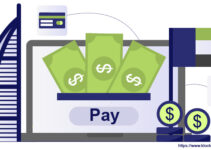Maintenance plays an important role in ensuring the smooth running of business operations at every level and across industries. Companies may have in-house staffing to take care of their physical and/or digital assets. However, a lot of businesses, especially small-scale ones, may not find this option of in-house maintenance financially feasible. So, how does the maintenance of assets work for these organizations? Well, it’s through outsourcing!
Outsourcing service is a commercial practice that emerged especially since the 1990s, where a third-party is hired to perform tasks and services typically rendered by the in-house staff. Today, outsourcing has become a common practice across industries, and also a financially viable option!
So if you haven’t really taken advantage of the outsourcing service, this article is just for you! We have compiled this ultimate guide to help you understand the nitty-gritty of outsourcing arrangements that briefly includes the following aspects –
- Benefits of outsourcing
- Things to consider before outsourcing, and
- Outsourcing pricing model
Benefits of an Outsourcing Arrangement
Outsourcing has become an increasingly prevalent method of maintaining the assets of the company. Here are certain benefits that outsourcing service reaps –
- Cost Effective –
Cost control is the driving force for most industries and the primary reason to choose outsourcing arrangements. Outsourcing service can reduce the overhead expenses, generate economies of scale, and lower labour rates, thereby helping in the overall cost savings
- Offers Staffing Flexibility and Expertise-
The outsourcing supplier can deliver a proper staffing level with the required skill set at low cost and higher time investment. The expertise of the outsourced staff will positively influence the quality of work.
- Allows to Focus on Core Activities –
Outsourcing arrangement can help the management focus on their core proficiencies and critical objectives to drive the business.
- Maintains Operational Control –
Outsourcing the business operations that have evolved to be uncontrollable, poorly managed and costly, is always a good idea. The outsourcing supplier can bring in better management skills to your company than what would otherwise be available without significant restructuring
Things to Consider Before Outsourcing
Sometimes the Organisations cause irreparable damage by outsourcing too early, while others ris companies outsources the wrong mix of activities. Hence Outsourcing is an act of balancing that requires proper planning and execution. The following are the main areas to consider before entering into an outsourcing agreement-
- Cost-Efficiency –
Cost-efficiency is the primary reason why outsourcing is done. The idea is to increase profit margins, lower the expenditure, while improving the quality of work. Thus it is important to choose the processes to outsource.Remember that core activities should not be outsourced.
- Business Reputation-
The reputation of the business is its soul, and hence while outsourcing the external processes, it must be very careful to ensure that there is no drop in the service levels.
- Innovation –
Innovation is the heart of any business, and here is where outsourcing the innovative processes can breed best results. This is because the internal team may be just too used to the existing business process, while the outsource staff can bring in a breath of fresh air!! However, businesses need to wary of a thorough right outsource provider who has the agility, and the ability to rapidly adapt to ever changing business needs.
- Calculated Risk –
A business with zero risk taking ability will never see growth. Outsourcing should therefore be a well-calculated risk that offers the businesses an opportunity to research their market and work closely with the third-party to innovate and generate the highest quality results possible.
Outsourcing Pricing Models
Outsourcing pricing models should be chosen based on the business objectives, type of work, timeline of the project, and the scope of work outsourced. Here are 5 different pricing models to choose from –
- The cost-Plus Profit Pricing Model-
Suitable for pre-defined business objectives along with static outsourcing requirements.
- Pay per Unit Pricing Model –
This model offers a unit-based set rate, and you will have to pay for the service, depending on the amount of your usage.
- ‘Variable Rate Pricing Model‘ –
Based on the services offered, it is scalable according to the additional services and market conditions.
- The fixed Rate Pricing Model –
Suitable for one-time projects or those with short term goals because once the price is decided, the business or the client may not be in the position to negotiate further.
- The performance-Based Pricing Model-
This model ensures the quality of work because it enables businesses to reward their vendors if they perform better.3
Key Takeaways
Outsourcing is rather an investment with calculated risks, which in turn offers long-term benefits in the form of increased profit margins, better operational control, and higher growth. By carefully analyzing your resources and your needs, you can find the optimal balance between outsourcing regular maintenance and having in-house staff to reap the maximum benefits.
If you are looking to outsource the maintenance of your digital assets, look no further, we at Kloc Technologies are here to help you!
Contact us today!



